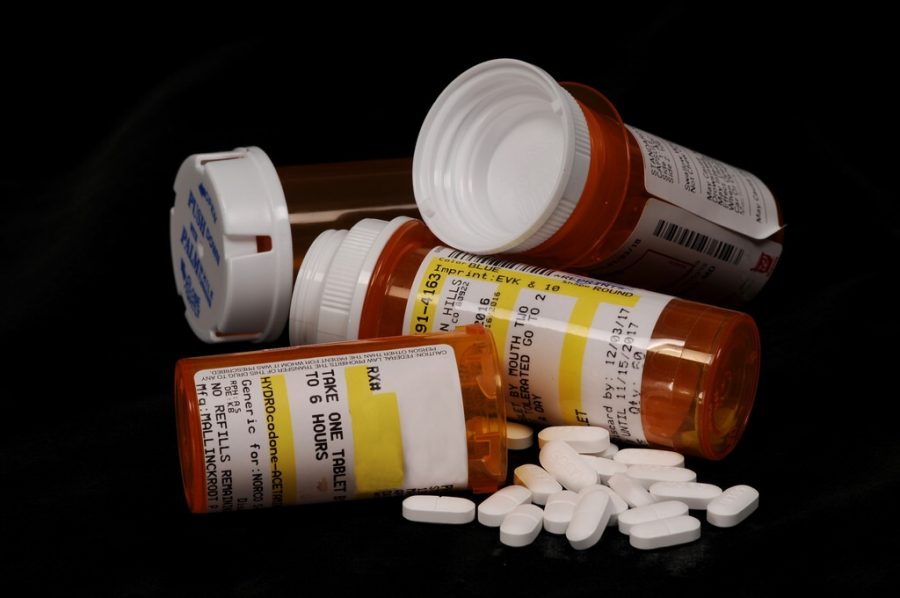How solutions journalism is tackling the opioid crisis
Solutions journalism allows journalists to approach problems constructively and provide solutions. // Gulf Breeze Recovery
October 27, 2018
While the precept “if it bleeds, it leads” has long been applied to journalism, a burgeoning movement within the press reckons that journalism should go one step further and help patch up the wound. Solutions journalism, or constructive journalism, is an approach to news reporting in which journalists serve to not only cover a problem, but “[serve] to look into the how-to’s of problem solving, often structuring stories as puzzles or mysteries that investigate questions” (Medium). The movement emerged in the late 1990s; while a study done in 1997 by the nonprofit group Public Agenda about attitudes towards the press found that 79 percent of respondents agreed that the media’s job was to expose wrongdoing, a group of journalists emerged that sought to broaden the traditional definition.
Around 2003, French media caught on as the frontrunners of the movement and created the French NGO Reporters d’Espoirs, or Reporters of Hope, the first network of journalists that worked to publicize solutions. The French newspaper Tyree followed suit and announced their goal to “publish Catalytic Journalism” and “engage the public.” As the 2000’s continued, the demand for solutions journalism rose up to meet the supply; a survey by Analyze Denmark in 2011 found that 83 percent of respondents wanted the media to cover more stories about solutions to problems embedded in the world. American media caught hold of the movement and Solutions, a non-profit print and online publication devoted to revealing solutions to ecological, social and economic problems, was launched in 2010. Meanwhile, journalists David Bornstein and Tina Rosenberg created a weekly “Fixes” column in the New York Times that, due to popular demand, grew into the Solutions Journalism Network.
Rosenberg argues that “societies don’t change simply because someone has pointed out a problem. We also need models to show that doing better is possible. Including coverage of how society is responding to problems — done in a rigorous way, without fluff, advocacy or public relations — is more engaging to an audience, more complete journalism, and creates a bigger impact.”
Jodie Jackson, the author of “You Are What You Read: Why changing your media diet can change the world,” agrees, mentioning that rhetoric that pits covering solutions against problems on the newsfeed only hurts and society must “acknowledge the complex and interdependent relationship between them.”
While most of these stories continue to exist on niche platforms like the Solutions Journalism Network or Discourse Media, they’ve began to enter mainstream media and have started gaining traction within the journalistic community. However, there are many who criticize the movement as being nothing but providers of “feel good” storytelling. The people behind the movement refutes this criticism and distance themselves from ‘good news journalism’ by explaining that they don’t shy away from discussing the negativity and problems in the world — they aspire to cover the problems, like traditional news reporting, but also add something else. Bornstein emphasizes the thresholds that stories have to pass to qualify as constructive journalism: they need to not only discuss the societal problem and potential remedies in depth, they must also provide evidence about the applicability of the solutions and the limitations in the proposed solutions.
As the movement continues to grow, it has enveloped topics that range from the #MeToo movement to suspension problems in public schools to education for suppressed classes of people in India. Together, this network has asked (and tried to answer): “How can we save journalism to help it save the world?” (Ulrik Haagerup).
In recent months, constructive journalism has been applied to covering the opioid crisis in America. Cumulatively, the articles create step-by-step processes to help control and alleviate the crisis from an individual to local to national level.
McKinley Corbley on the Good News Network covered a study done by researchers titled “Opioid prescribing decreases after learning of a patient’s fatal overdose” that demonstrated how feedback could reduce opioid prescriptions. The researchers observed that one of the primary origins of the crisis was doctors prescribing opioids for common conditions where the risks outweigh the benefits, noting that, “most people addicted to opioids began taking them because they were legally prescribed. Little attention has been paid to changing physicians’ prescribing behavior.” To counteract this, they used a simple method: they informed physicians of the overdose and death of one of their patients and attached the CDC-approved set of guidelines about the procedure to safely prescribe opioids. In comparison to the control group, which didn’t receive the letters, these physicians prescribed 10 percent fewer opioids in the future, were less likely to start patients on opioids and were less likely to prescribe higher doses.
Jason Doctor, the lead researcher, mentioned that their study was “one piece of the puzzle; it’s not the end-all solution. I think we’re going to need a lot of these nudges to bring prescribing down.”
He and his team found that more personal approaches like this could do more to halt the opioid crisis than the sweeping policy efforts by politicians to limit the power of physicians to prescribe opioids; the legal alternative could hurt more than help, as they could cause a “lot of suffering” among chronic pain patients, mentions drug policy expert Keith Humphreys. In contrast, the letters provide a welcome balance: they limit the prescription of opioids while allowing those who genuinely need them to continue their dosage.
Jacob Carozza of The Boston Globe reported on a different angle of the crisis: in Plymouth, a program called Project Outreach linked police departments with treatment providers in order to offer proactive treatment for addicts. When an overdose that leads to hospitalization occurs in the community, a police officer and clinician will follow up within 24 hours to help craft a treatment option; if there is a warrant out for the individual’s arrest, they will be arrested but will be given addiction treatment through the criminal justice program.
A similar program is enforced in Huntington, West Virginia. Christa Case Bryant from the Christian Science Monitor reported on how her city has put in place a Quick Response Team (QRT) composed of paramedics, mental health specialists, and police officers who check up on an individual within 72 hours of an overdose; those whom are visited by the QRT are more likely to get better and seek treatment because the compassionate outreach makes them feel cared for — not simply tolerated — by their community.
Karen Yost, the CEO of the Prestera Center, a partner of the QRT implementer of a similar program in Charleston, described, “[First responders] are having people say to them, ‘This is the first time that someone has cared enough to come and do this, you’ve saved my life, thank you.”
QRT coordinator Connie Priddy of Cabell County EMS mentioned to Bryant that “For so many years, we didn’t see the patients being receptive. And now, because we’re working on changing how we approach it, their way of accepting us has changed.”
The federal government noticed the town’s success and approved a bipartisan bill to implement the program throughout West Virginia, and officials of Huntington hope to implement it nationwide soon as well.
As solutions like these spread across local, state, and federal lines, many foresee constructive journalism holding a more significant role in the media in the future.
Constructive journalism identified pitfalls and boulders in traditional methods to stop the opioid crisis; by focusing on the plans to help fix the issue alongside covering the number of deaths and severity of the crisis, journalists were able to help the community craft new, efficient solutions that spread across the local, state, and federal lines. To many, examples like this serve to emphasize the broadening role solutions journalism is taking in media and how journalism is being used to “save the world.”


